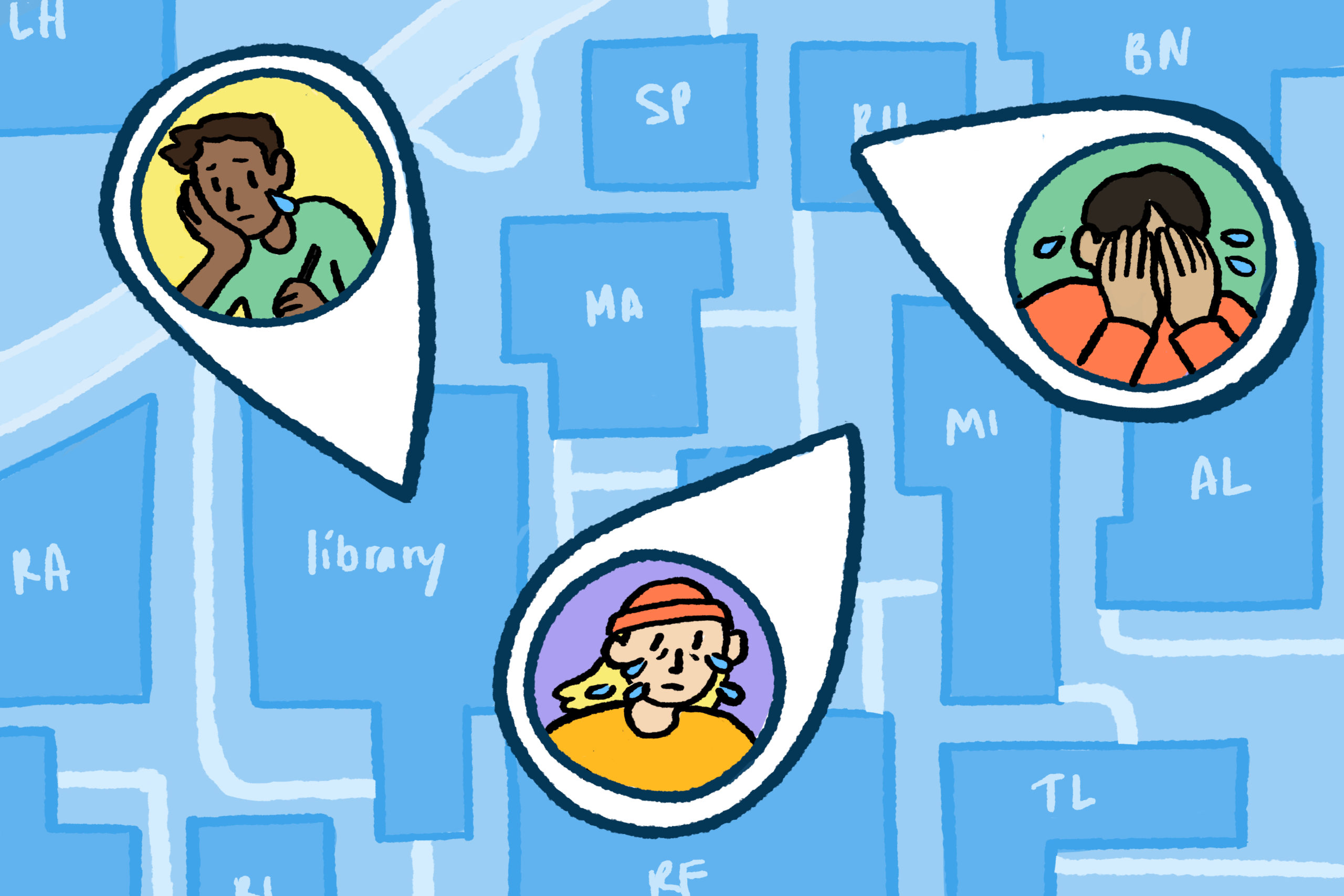
From midterm stress to homecoming excitement, the emotions students feel during their time at university are often a shared experience—but students may be surprised to discover the similarity in where these tears are shed on campus.
According to a recent project by two University of Waterloo (U of W) students, some locations on their university’s campus are more popular than others for students to cry.
The project titled “Waterworks”—created by Queenie Wu and Leslie Xin, third-year systems design engineering students at U of W—is an interactive map of U of W’s campus that shows the places students have cried.
What started as a fun project for the two friends was posted on the U of W’s Reddit page and received over 500 submissions.
“I was surprised by how open people can be about their feelings,” Wu said.
Since meeting in their first year at U of W, Wu and Xin have bonded over their mutual interest in art.
During the pandemic, they have held routine virtual art therapy sessions together to create art and talk about their feelings. The two said those conversations sparked a discussion about emotional expression and the times they have cried on campus.
Wondering if other students had similar stories, they took to Reddit, collecting anonymous stories about people crying on campus.
“They can use this map to hopefully show that we have this commonality of going to the school, even if some folks have never been on campus before,” Wu said.
While learning remotely due to the COVID-19 pandemic, Wu said students are feeling more isolated from each other than they did when classes were on campus before the pandemic.
“Even if you’re feeling extremely lonely or isolated at home, or even on campus, the physical space of the university campus is something that is common for all of us as students,” Xin said.
On the map, each blue dot highlights where a student cried, and orange markers display featured stories about why a student cried at that specific location.

Featured stories depict the rollercoaster of emotions that occur around campus, including issues with OSAP, menstruation and even meeting Canadian astronaut Col. Chris Hadfield.
Xin and Wu said they hope each story helps students relate to one another.
“It was a late night walking home from some tutorial, the orange fluorescent lighting in the rock garden reminded me of the street lamps at home. I missed home,” said one anonymous submission.
After interacting with the map, U of W students have shared their own stories about the feelings the map invoked.
“It helps me understand that I’m not alone in crying. I’m not the only one experiencing hard times,” said Kashfia Mahmood, a second-year mechatronics engineering student at U of W.
Tim Lu, first-year software engineering student at U of W, has yet to experience much of campus life due to pandemic restrictions, but Waterworks has given him insight to the student experience.
“I can see why this map can provide emotional comfort,” Lu said.
Xin and Wu also received suggestions from a graduate student about how they can use the data as a starting point to locate ‘hot spots,’ areas or buildings that seem to have a higher than average concentration of blue dots.
Some students suggested the university can put more mental health-related resources in those locations.
Alana Sham, a registered psychotherapist at Your Story Counselling Services, said this is a great initiative.
“To hear that it’s no longer a solo, singular action to cry by yourself and that you actually have places and people you can share that with, shows that it’s all the better to be in a community,” Sham said. “You’re not alone.”
Sham said she recognizes that articulating negative emotions can be difficult, and that many people struggle with it until they reach their breaking point. She suggests for everyone to practice acknowledging their feelings, instead of trying to control them.
“Our society has taught us to hide negative emotions,” she said. “Crying is so very normal, there’s nothing wrong about it.”
According to Xin, the duo have also received messages from students from other universities who want to create a similar project for their campus, showing her how universal the idea of crying on campus is for students of all campuses.
Wu said she hopes the map can be more than a conversation starter. She said she hopes it will lead to universities recognizing the importance of investing in mental health resources for its students.
“This is just a prompter to say that crying is not a bad thing. It is something that everyone does,” Wu said. “It’s a universal experience.”
Featured graphic by Etta Gerrits.





